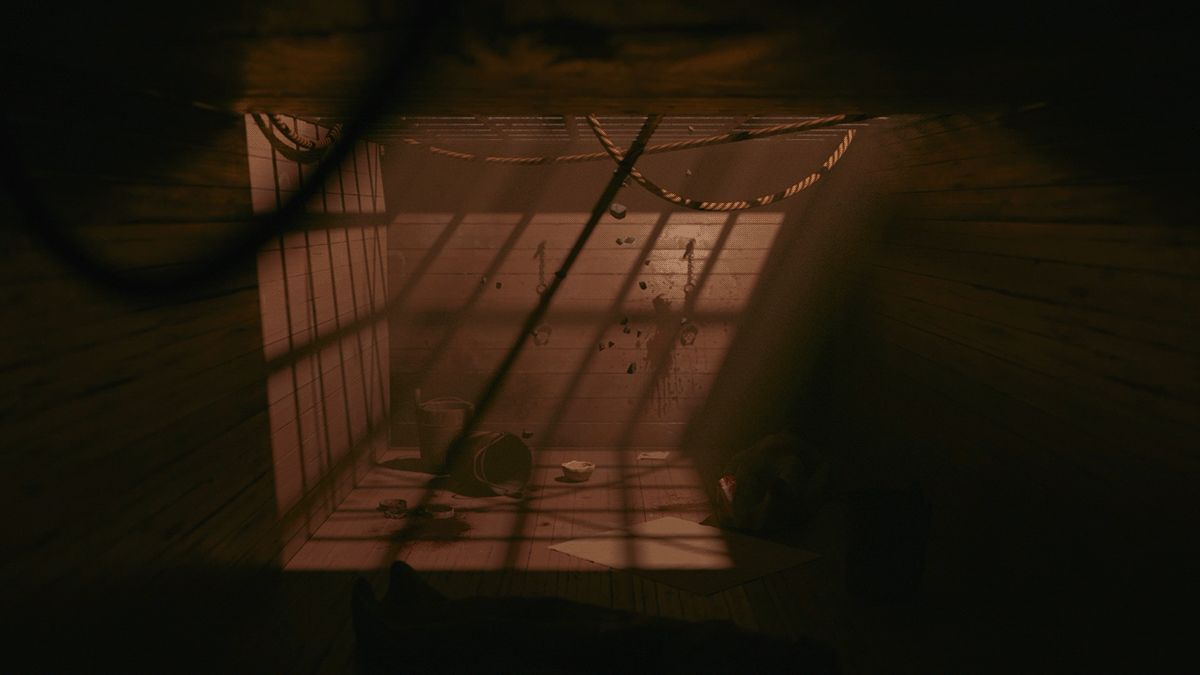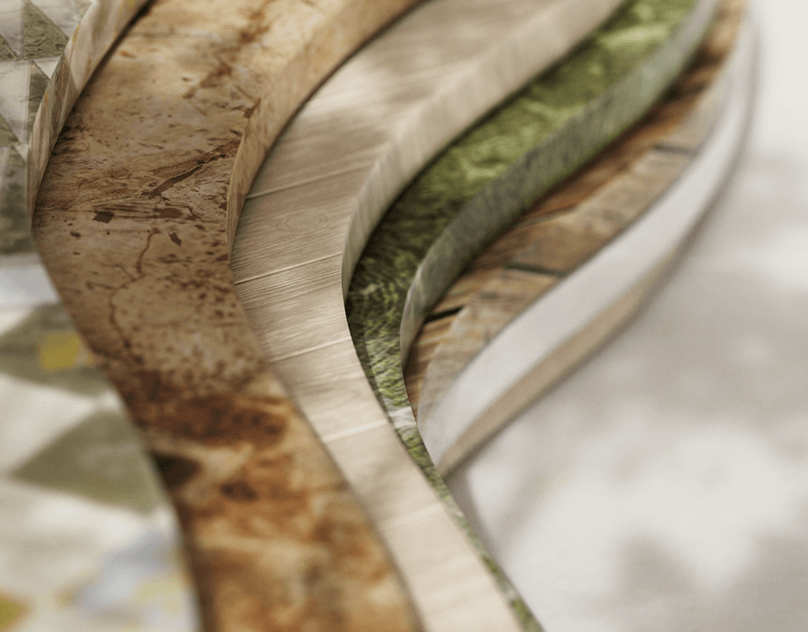Avatar The Last Airbender
[Avatar the last airbender]는 2004년부터 2008년까지 니켈로디언 채널에서 방영한 애니메이션입니다.
어린이를 타겟으로 만든 애니메이션임에도 불구하고 전쟁, 삶과 죽음 같은 무거운 주제를
훌륭한 서사로 풀어냈다는 평을 받습니다.
2차 세계대전의 많은 사건들에서 영감을 받았고 동양 문화가 주요 무대가 되는 애니메이션입니다.
2D 애니메이션인 아바타가 실사 드라마로 나왔을 때를 가정한 오프닝 타이틀을 제작하였습니다.
어린이를 타겟으로 만든 애니메이션임에도 불구하고 전쟁, 삶과 죽음 같은 무거운 주제를
훌륭한 서사로 풀어냈다는 평을 받습니다.
2차 세계대전의 많은 사건들에서 영감을 받았고 동양 문화가 주요 무대가 되는 애니메이션입니다.
2D 애니메이션인 아바타가 실사 드라마로 나왔을 때를 가정한 오프닝 타이틀을 제작하였습니다.
[Avatar The Last Airbender] is a tv series aired on Nickelodeon channel from year 2004 to 2008. Despite the fact that the animation was for children, it unraveled heavy topics such as war, life, and death in excellent narratives. Inspired by many events in World War II, Asian culture is set as the main stage of the show. I created the opening title assuming that the 2D animation ATLA came out as a live-action drama.
아바타의 세계에는 4가지 원소를 상징하는 민족이 있습니다. 물의 부족, 흙의 왕국, 불의 제국, 그리고 공기의 유목민이 공존을 이루며 살고 있었습니다. 각 부족에서는 그 원소를 자유자재로 다룰 수 있는 ‘벤더’들이 때때로 태어났지만 한 사람이 하나 이상의 원소를 다루는 것은 불가능 했습니다. 하지만 죽음과 환생으로 수백 년간 이어져 온 ‘아바타’ 한 사람만이 네 가지 원소를 모두 다룰 수 있었고 네 나라의 공존을 유지하는 역할을 했습니다. 하지만 모종의 이유로 아바타가 실종되었고 불의 제국이 공기의 유목민을 모두 학살하며 100년간의 전쟁이 벌어지게 됩니다.
[아바타 : 더 라스트 에어벤더]는 전쟁이 시작하고 100년이 지난 후 세상에 다시 나타난 아바타의 이야기입니다.
아바타는 자신이 자리를 비움으로서 얼마나 많은 비극이 있었는지 깨달아 가며 그것을 동료들과 해결하려 합니다.
어린 아바타의 성장 스토리가 애니메이션의 가장 큰 주제였다면, 저는 아바타가 없었기 때문에 일어난 많은 이들의 비극에 초점을 맞추고 싶었습니다. 영상에서 각 세력의 캐릭터를 소개하는 순서는 물-흙-불-공기 순으로 환생하는 아바타의 순환을 따라 만들었습니다.
아바타는 자신이 자리를 비움으로서 얼마나 많은 비극이 있었는지 깨달아 가며 그것을 동료들과 해결하려 합니다.
어린 아바타의 성장 스토리가 애니메이션의 가장 큰 주제였다면, 저는 아바타가 없었기 때문에 일어난 많은 이들의 비극에 초점을 맞추고 싶었습니다. 영상에서 각 세력의 캐릭터를 소개하는 순서는 물-흙-불-공기 순으로 환생하는 아바타의 순환을 따라 만들었습니다.
In the world of the [Avatar The Last Airbender], there are four elements of ethnicity. The Water tribe, Earth kingdom, Fire nation, and Air nomads lived in coexistence. In each tribe, "benders" who could manipulate the element were sometimes born, but it was impossible for one person to handle more than one element. However, only the "Avatar," which has been around for thousands of years by death and reincarnation, was able to handle all four elements and played a role in maintaining the coexistence of the four nations. However, for some reason, the avatar disappeared, and the Fire nation slaughtered all air nomads, leading to a 100-year war.
Story of [Avatar: The Last Air Bender] starts 100 years after the war began, when the Avatar came back to the world. The Avatar tries to solve it with his friends by realizing how many tragedies there have been by his absence. If the character development of young Avatar was the main arc of the animation, I wanted to focus on the tragedy of many people caused by his absence. The order of introducing the characters of each ethnicity in the video was created according to the cycle of avatar reincarnation. water-earth-fire-air.
Story of [Avatar: The Last Air Bender] starts 100 years after the war began, when the Avatar came back to the world. The Avatar tries to solve it with his friends by realizing how many tragedies there have been by his absence. If the character development of young Avatar was the main arc of the animation, I wanted to focus on the tragedy of many people caused by his absence. The order of introducing the characters of each ethnicity in the video was created according to the cycle of avatar reincarnation. water-earth-fire-air.




영상의 전반부는 주요 제작진의 이름이 나오며 스토리에서 가장 중요한 전쟁의 시작과 결과를 보여줍니다. 배우의 이름이 나오는 뒷부분은 그 배우가 맡은 캐릭터들과 관련한 이미지가 담겨있습니다. 위 이미지는 아바타 로쿠가 당시 왕이었던 소진을 저지하지 못하고 사망하며 시작된 전쟁을 나타냅니다.
The first half of the video features the names of major developers of the tv show while showing the beginning and outcome of the 100 year war. The second part where the actor's name appears contains images related to the characters the actors play. The images above shows the war that began after Avatar Roku died without being able to stop king Sozin.




불의 제국이 휩쓸고 지나간 자리를 표현했습니다. 황폐화된 땅과 전부 살해당한 공기의 유목민의 모습입니다.
해골은 시즌1 3화에 등장한 기얏소의 시신입니다.
해골은 시즌1 3화에 등장한 기얏소의 시신입니다.
These are the places where the Fire nation swept away. The desolate land and the air nomads that were killed. Skull is the body of Monk Gyatso, who appeared in episode 3 of the season 1.



카타라의 어머니가 불의 제국 군인에게 죽고 남겨준 목걸이입니다. 떨어지는 목걸이는 가족의 죽음을 상징합니다. 장소는 시즌 1 피날레 에피소드에 등장하는 북극의 연못입니다. 붉은 달은 소카가 사랑하는 사람의 희생을 의미합니다.
This is a necklace Katara's mother left after killed by a Fire nation soldier. The falling necklace symbolizes the death of the family member. The location is the spirit oasis in the Season 1 finale episode. The red moon symbolizes the sacrifice of the person Sokka loves.


감옥은 수키가 제국에 대항해 싸웠음에도 불구하고 결국 수감되었던 상황을 보여줍니다.
그리고 많은 사람들의 자유가 강제로 박탈당하게 되는 전쟁의 현실을 보여줍니다.
창살 사이로 떨어지는 돌 무더기는 이런 상황을 빠져나갈 희망입니다.
시즌 1 6화에서 나온 감옥 반란 장면의 연장선으로 생각했습니다.
그리고 많은 사람들의 자유가 강제로 박탈당하게 되는 전쟁의 현실을 보여줍니다.
창살 사이로 떨어지는 돌 무더기는 이런 상황을 빠져나갈 희망입니다.
시즌 1 6화에서 나온 감옥 반란 장면의 연장선으로 생각했습니다.
클로즈업 장면은 토프의 삶을 비유적으로 보여줍니다. 실제 감옥에 갇히지는 않았지만
시각 장애인이라는 이유로 가족이라는 비물리적 감옥에 구속되었음을 창살의 그림자로
시각 장애인이라는 이유로 가족이라는 비물리적 감옥에 구속되었음을 창살의 그림자로
표현했습니다. 실체가 없는 감옥이기 때문입니다. 하지만 어스 벤딩(earth bending)으로
스스로를 자유롭게 한다는 점에서 이전 컷과 연결되었습니다. 바닥에 비친 격자 무늬 창틀
그림자는 토프가 자유를 찾던 경기장의 바닥과 유사합니다.
스스로를 자유롭게 한다는 점에서 이전 컷과 연결되었습니다. 바닥에 비친 격자 무늬 창틀
그림자는 토프가 자유를 찾던 경기장의 바닥과 유사합니다.
Prison shows the situation in which Suki was eventually imprisoned even though she fought against the Fire nation. And it shows the reality of war that many people's freedom is forcibly deprived. A pile of stones falling through the bars give hopes to escape this situation. I thought it was an extension of the prison rebellion scene from episode 6 of season 1.
The close-up scene metaphorically shows Toph's life. Although she was not actually imprisoned, the shadow of the bars symbolize the fact she was bound by a non-physical prison called family, because she was visually impaired. The close-up was connected to the previous cut and symbolize she frees herself through earth bending which gave her hope. The shadow of the grid window frame on the floor is similar to the floor tiles of the stadium where Toph was looking for freedom.


푸른 정령은 주코가 자신의 정체를 감추고 행동하기 위해 썼던 가면입니다. 불의 제왕인 아버지로부터 학대를 받고 추방된 주코는 아바타를 잡아야만 영광스럽게 귀환할 수 있는 삶을 살았습니다. 본래 선한 아이였지만 그 목표를 이루기 위해, 자신이 살아남기 위해 악한 행동을 해야 했고 이 가면은 그가 가진 양심의 가책을 덜어주는 역할을 했습니다. 전쟁은 가장 선한 사람조차 악하게 만들고 양심을 점점 타협해 나가게 한다는 것을 보여주고 싶었습니다. 가면이 물에 가라앉는 장면은 시즌 2 17화에서 주코가 가면을 버리는 장면을 재구성한 것입니다. 그럼에도 자신을 구원할 방법이 남아있다는 것을 표현했습니다.
The Blue Spirit is a mask worn by Zuko to hide his identity and act secretly. Zuko, who was expelled after being abused by his father, the Fire lord, and lived a life of chasing the Avatar to regain his honor. He was once a good child, but to achieve his goal, he had to act evil to survive, and this mask played a role in relieving his conscience. I wanted to show that war makes even the nicest people evil and gradually compromises their conscience. The scene where the mask sinks into the water is a reconstruction of the scene where Zuko throws away the mask in episode 17 of season 2. It was an expression that there is still a way to redeem himself.

아줄라는 장자이며 왕위 계승자인 주코의 여동생이지만 더 강하고 재능이 있어 번개를 만들 수 있습니다. 아줄라가 이끄는 함대가 번개의 빛을 반사해 그 규모를 보여주고 그만큼 위협적인 존재임을 알 수 있습니다. 스스로의 뛰어남을 과시하며 형제를 깔보는 모습을 수면 아래 주코를 두고 자신은 수면 위에서 화려하게 존재하는 상하 관계로 설정했습니다. 남매임에도 불구하고 서로를 적으로 생각하는 비극을 보여줍니다.
Azula is the sister of Zuko, who is the eldest son and heir to the throne, but she is stronger and more talented, so she can even make lightning. The fleet led by Azula reflects the lightning, showing its scale, and how big of a threat she is. Showing off her power and looking down on his brother, is set as a top-down relationship that Azula exists on the surface while Zuko(the blue spirit mask) is under the water. Even though they are siblings, they show a tragedy of thinking of each other as enemies.


오자이는 불의 제국의 왕이며 피바람을 일으키는 주범으로, 모든 갈등의 원인으로 존재합니다.
전쟁터는 그와 선대 왕들의 행적을 보여주는 상징적 이미지입니다.
전쟁터는 그와 선대 왕들의 행적을 보여주는 상징적 이미지입니다.
아이로는 오자이의 형이며 왕이 되어야 했지만 자신이 지휘하던 전쟁터에서 아들이 전사하며 모든 것을 내려놓게 됩니다. 하나밖에 없는 자식을 잃고 나서야 모든 갈등과 비극의 원인을 가장 정확히 꿰뚫어 보기 시작했습니다.
Ozai is the king of the Fire nation and the main culprit of countless bloodshed, and exists as the cause of all conflicts. The battlefield is a symbolic image of the deeds of him and his predecessors.
Iroh is Ozai's brother and he was a rightful heir to the throne. But after his son was killed in the battlefield where he was leading, he put everything down. It wasn't until he lost his only child that he began to see the reason of all the conflicts and tragedies most clearly.
Iroh is Ozai's brother and he was a rightful heir to the throne. But after his son was killed in the battlefield where he was leading, he put everything down. It wasn't until he lost his only child that he began to see the reason of all the conflicts and tragedies most clearly.


이 모든 비극은 아바타 아앙이 사라졌기 때문에 일어난 일이었고 그는 100년만에 세상에 돌아오게 됩니다.
모든 것이 그의 책임은 아니지만 고쳐 나가야 할 것이 많습니다. 빙하 속에서 아바타의 귀환을 알리는 광선이 솟아 오르며
드라마가 시작됩니다.
모든 것이 그의 책임은 아니지만 고쳐 나가야 할 것이 많습니다. 빙하 속에서 아바타의 귀환을 알리는 광선이 솟아 오르며
드라마가 시작됩니다.
All this tragedy happened because Avatar Aang disappeared, and he returned to the world after 100 years.
Not everything is his responsibility, but there's a lot to fix. The show begins with a ray of light rising in the glacier to announce the return of the Avatar.
Not everything is his responsibility, but there's a lot to fix. The show begins with a ray of light rising in the glacier to announce the return of the Avatar.



Few assets I modeled and textured

Early stage storyboard which was changed a lot
Unused scenes and assets



























I wanted to make a new title logo for the show. But ended up using the original logo. Here are some sketches anyway.


Small graduation exhibition at KonKuk university






